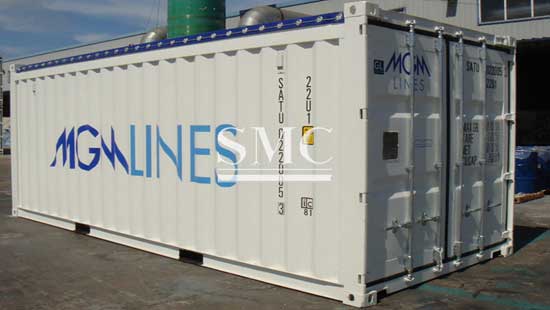Special containers and general containers are not much different. Due to various requirements, the structure and equipment of the container need to be designed and modified differently. Because it is widely used, there are many classifications of special containers. The following is a brief introduction to the main types of special containers.
Open-top special container, which is a container without a top or top opening. When loading and unloading goods, the crane should be used to load heavy goods from the top into the box or unload. This container is suitable for loading ultra-high-priced goods such as glass plates, steel products, plywood, and mechanical equipment.
Frame type special container, which is a container without the top of the box and the wall of the box, the end wall of the box can be removed, and only the bottom of the box and the four corner columns are used to bear the load. This type of container is generally suitable for long and large parts, overweight parts, light foam goods, heavy machinery, steel, steel pipes, bare equipment, etc. that cannot be loaded into a grocery container or an open top container. Standard goods, goods that are not afraid of wind and rain assault, goods that are loaded from the top of the box or the side of the box, and goods that need to be fixed in the box.

Bulk special container, which is used to load containers of soybeans, rice, malt, flour, feed, and bulk powdered goods such as cement, resin, borax, and chemical raw materials. For some goods that require phytosanitary treatment, such as imported food, some need to be fumigated at anchorages outside the port. The opening into the fumigant can be placed on the bulk container, as well as the fumigant discharge, and the container can be required to be completely airtight during fumigation.
Tank-type special container, a container suitable for loading liquids such as alcohol, oil, chemicals, dangerous goods, etc. This type of container has special structures and equipment suitable for loading such goods. When loading, the goods enter from the loading hole at the top of the tank; when unloading, the goods flow out by the bottom discharge hole by gravity, or by the top loading port.
These are the differences between their appearance and basic use. In fact, there are many classifications of special containers. Their appearances are generally the same, but the functions are different and different.
Guest contributors are welcome at the Alloy Wiki.It is a weekly wiki and guide on alloy information and processing technology, while also about the vast array of opportunities that are present in manufacturing. Our team of writers consists of a Machining Material Supplier / Machinist / Tool and Die Maker, a Biomedical Engineer / Product Development Engineer, a Job Development Coordinator / Adjunct Professor, and a President and CEO of a manufacturing facility.
Link to this article:Classification of container use
Reprint Statement: If there are no special instructions, all articles on this site are original. Please indicate the source for reprinting:Alloy Wiki,thanks!^^


